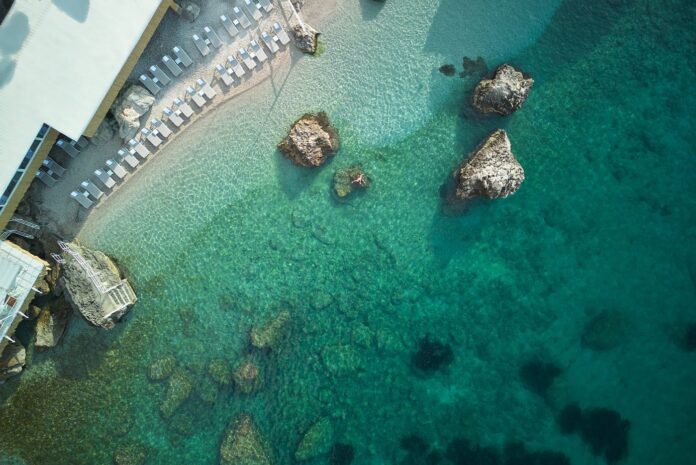Capri’s first hotel, which was originally built in 1822, had been transformed by Oetker Collection and owner partner Reuben Brothers into an elegant 50-room-and-suite property. It was the first hotel designed by interior design visionary Francis Sultana, who had collaborated with acclaimed Italian craftsmen and local artisans.
Located just steps from the famous Piazzetta, Hotel La Palma comprised two restaurants and bars, its own private beach club, a newly built pool deck, and a spa. Da Gioia by La Palma, the beach club also designed by Sultana, was set to quickly become the day-into-night epicenter of the social scene on the island. The culinary vision for all restaurants was led by Neapolitan Chef Gennaro Esposito.
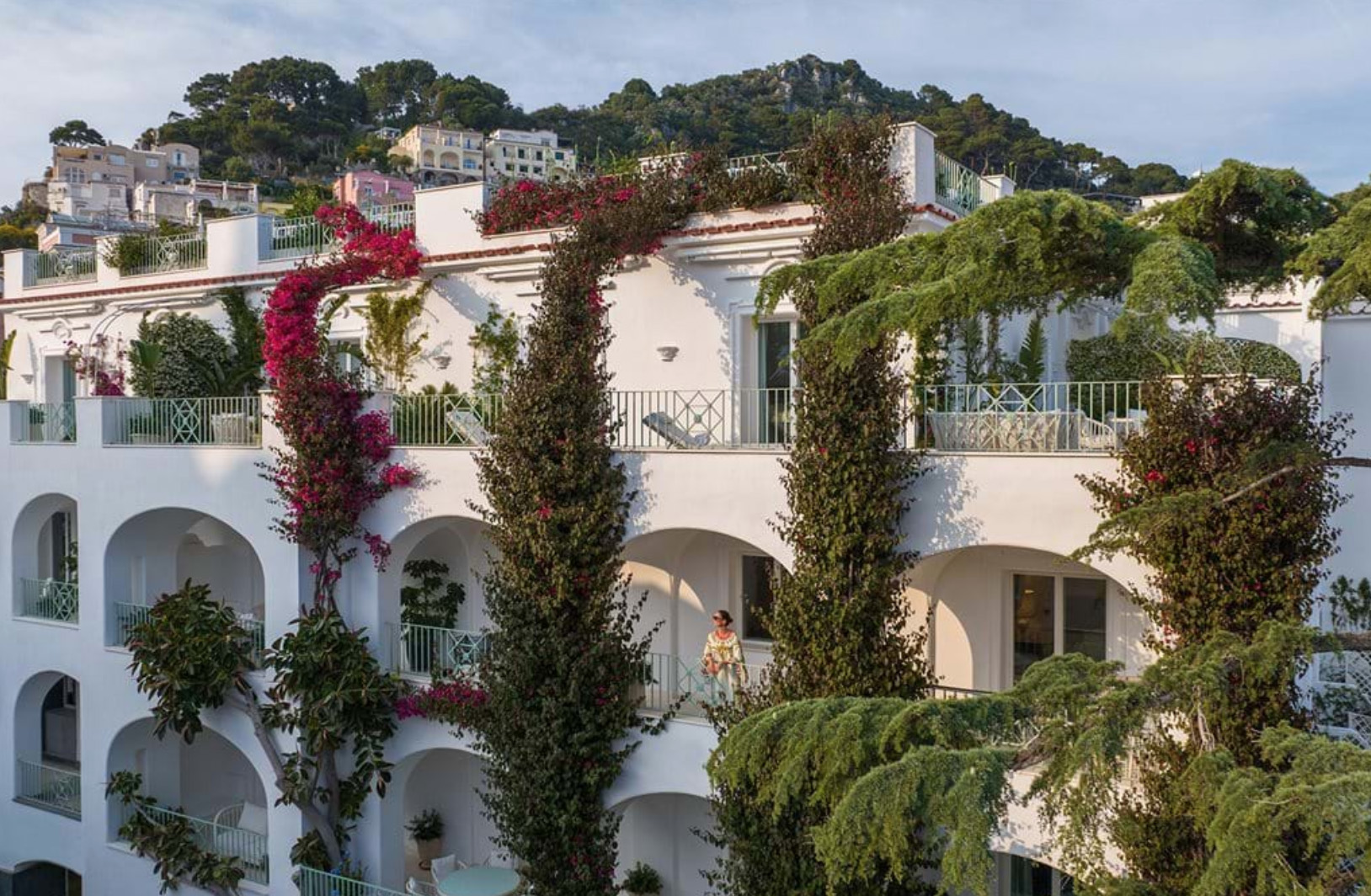
Oetker Collection announced the opening of its 11th hotel, Hotel La Palma in Capri. In line with Oetker Collection’s mission to carefully expand its portfolio of Masterpiece Hotels in the world’s most desirable destinations, the debut of the brand’s first Italian property symbolized a true milestone for the ultra-luxury hospitality company. Owned by Reuben Brothers, Hotel La Palma marked a landmark procurement in their pipeline of investments and developments in Europe. The Reuben Brothers’ acquisition also included the legendary La Taverna Anema e Core nightclub, a famous nightspot frequented by celebrities, located in the same premises.
Conceived as a unique, elegant Mediterranean retreat on the fabled Italian island for the modern traveler, the original hotel on Capri, which first opened over 200 years ago, was once more the chicest address on the island. During its 2.5-year renovation, the room count of the hotel was drastically decreased from 80 to 50 rooms, including 18 suites, each complete with its own private balcony or terrace. Located in the beating heart of Capri, just steps from the famous Piazza Umberto I – well-known as the ‘Piazzetta’ – Hotel La Palma was perfectly positioned for guests to visit some of the most notable sites of Capri: I Giardini di Augusto, Via Krupp, La Certosa, and the iconic Faraglioni. Synonymous with timeless elegance, Capri was famous for its rocky landscape, restaurants, shopping, and illustrious noble visitors, including royalty, aristocrats, and celebrities, many of whom had visited Hotel La Palma in the past.
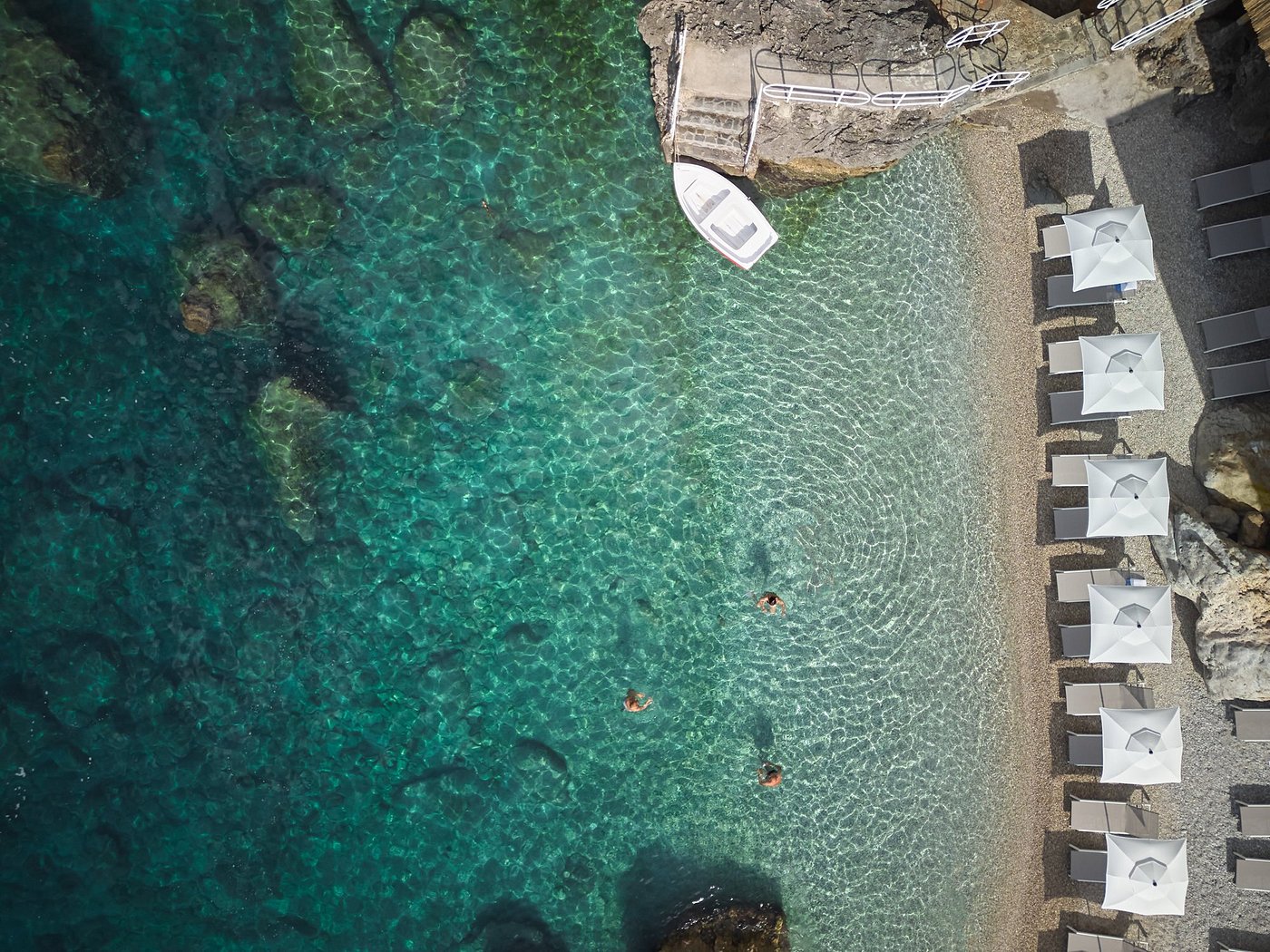
In a remarkable renovation led by the internationally acclaimed designer Francis Sultana, Hotel La Palma underwent a stunning transformation, becoming an inviting home away from home. It marked Francis’ inaugural venture into hotel design, and his meticulous attention to detail aligned perfectly with Oetker Collection’s vision. From the bathroom taps to the dining chairs, Francis personally crafted each element, skillfully capturing Capri’s timeless elegance and minimalist charm while infusing touches of flair and nostalgia reminiscent of the island’s glamorous 1950s jet-set era. The hotel’s interior radiated a sense of tranquility with its soothing Mediterranean blue, green, and turquoise tones, harmonizing flawlessly with the natural surroundings. The carefully selected textures took center stage, creating an ambiance that was both serene and tactile, exuding a warm and welcoming atmosphere. Every room seamlessly flowed into meticulously designed marble and bronze-lined bathrooms, bearing Francis’ distinct artistic imprint. To honor its heritage and maintain an authentic connection to the locale, Francis enlisted acclaimed Italian craftsmen and local artisans, collaborating with artists such as Luisa Lambri, renowned for her in-room artworks, and partnering with Bonacina for exquisite handmade rattan furniture. Stella’s custom bathroom fittings added an extra touch of elegance and refinement.
Reflecting on his deep affection for Capri, Francis expressed, “Capri is an island that holds a special place in my heart. Hotel La Palma, now reborn as an iconic establishment, will undoubtedly capture the adoration of all who experience its renewed charm. My design aimed to encapsulate the unique bond I share with Capri—an island that bewitched me from my very first visit in my early 20s. It is a place of romanticism, inhabited by individuals with a keen eye for aesthetics, offering boundless beauty and unending inspiration across all creative domains.”
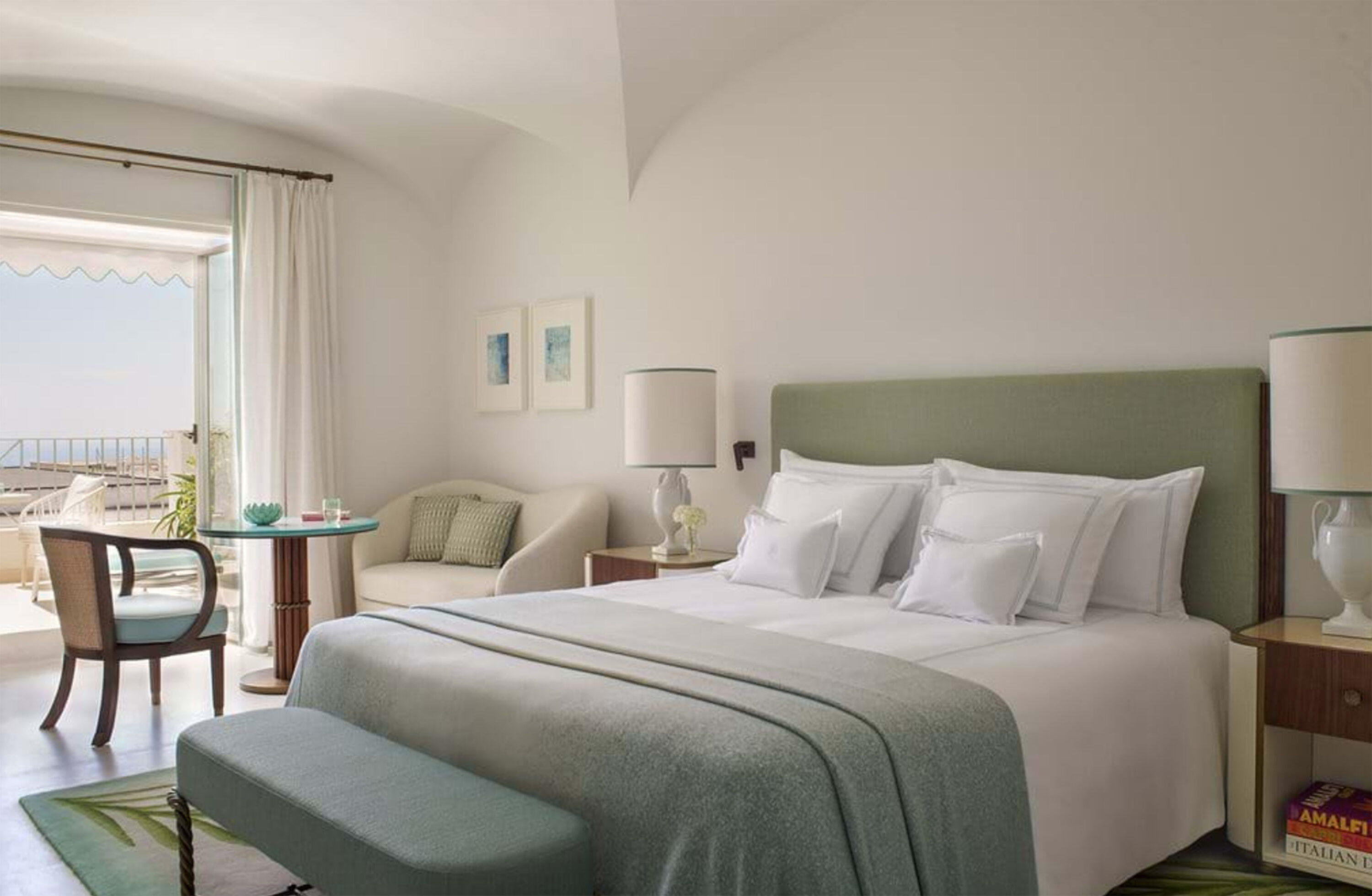
Serving as an artistic testament, the hotel foyer held a symbolic significance, paying homage to Hotel La Palma’s original incarnation as a haven for artists who settled their bills by leaving behind cherished artworks. Stepping into the hotel, guests were greeted by breathtaking ceiling frescoes meticulously crafted by Roberto Ruspoli, hailed as the visionary who reinvented frescoes. These contemporary frescoes harmoniously celebrated Italy’s classical heritage, capturing the essence of the island’s soul. Ruspoli shared insights into his work, stating, “Within these paintings, I drew inspiration from the Roman world, with classical figures majestically floating amidst a palette of blue and green tones, reminiscent of the sky, sea, and nature. The imagery, akin to ancient, weathered plaster, thoughtfully incorporates the graceful presence of palm trees, creating a captivating visual narrative.”
In true Italian fashion, Hotel La Palma was a gourmand’s delight, featuring Gennaro’s restaurant, bar, and terrace under the expert guidance of Chef Gennaro Esposito. Chef Esposito, a culinary hero in Italy, had successfully operated his own two-Michelin Star restaurant, Torre del Saracino in Vico Equense, Naples, for the past 23 years. Gennaro’s exuded the simple and stylish charm of 1950s Capri, embracing the timeless romance of the island by serving unpretentious and authentic Italian cuisine. It was a contemporary and vibrant establishment that eschewed formality, celebrating the spirit and culinary traditions of Capri. Gennaro’s also had the added advantage of being situated just above the renowned Taverna Anema e Core, affording it an enviable vantage point overlooking the bustling streets of Capri.
The terrace at Gennaro’s provided an atmospheric backdrop for guests to savor delectable Italian dishes and specialty cocktails while taking in the vibrant surroundings. Another notable feature was Bianca, a glamorous rooftop restaurant and bar with breathtaking views of Capri Village and the sea in the distance. Under the culinary direction of Chef Gennaro Esposito, Bianca was destined to become the island’s most fashionable hotspot, transporting guests to another era. Additionally, Hotel La Palma boasted a brand-new pool deck complete with an elegant pool bar, Aqua Bar & Pool, paying homage to the classic Capri of the golden age. Chef Gennaro Esposito expressed, “We aim to provide visitors with an authentic Italian experience while staying attuned to the modern times. Above all, we take pride in offering a warm and welcoming experience full of Italian flavor. Our cuisine will naturally feature local specialties, creatively enriched and reinterpreted.”
A short drive along Capri’s southern coast led guests to the chic yet laid-back Da Gioia by La Palma beach club in Marina Piccola. It was a place where the fabulous would come and go, indulging in sun-drenched days that seamlessly transitioned into enchanting twilight evenings. Open to both hotel guests and non-guests, Da Gioia by La Palma attracted visitors from yachts and neighboring hotels, establishing itself as the preferred meeting place on the island for leisurely and lavish lunches crafted by Chef Esposito.
By day, it served as a playground for the well-heeled and esteemed, while at night, it transformed into a haven of carefree indulgence and a premier social destination to revel in Capri’s lively atmosphere. The menu highlighted fresh, locally sourced ingredients, featuring Italian classics such as eggplant parmigiana, lobster pasta, and the catch of the day cooked in a salt crust. Da Gioia by La Palma offered 42 sun loungers and a separate private beach area accommodating up to eight guests, all attended to by a dedicated team.
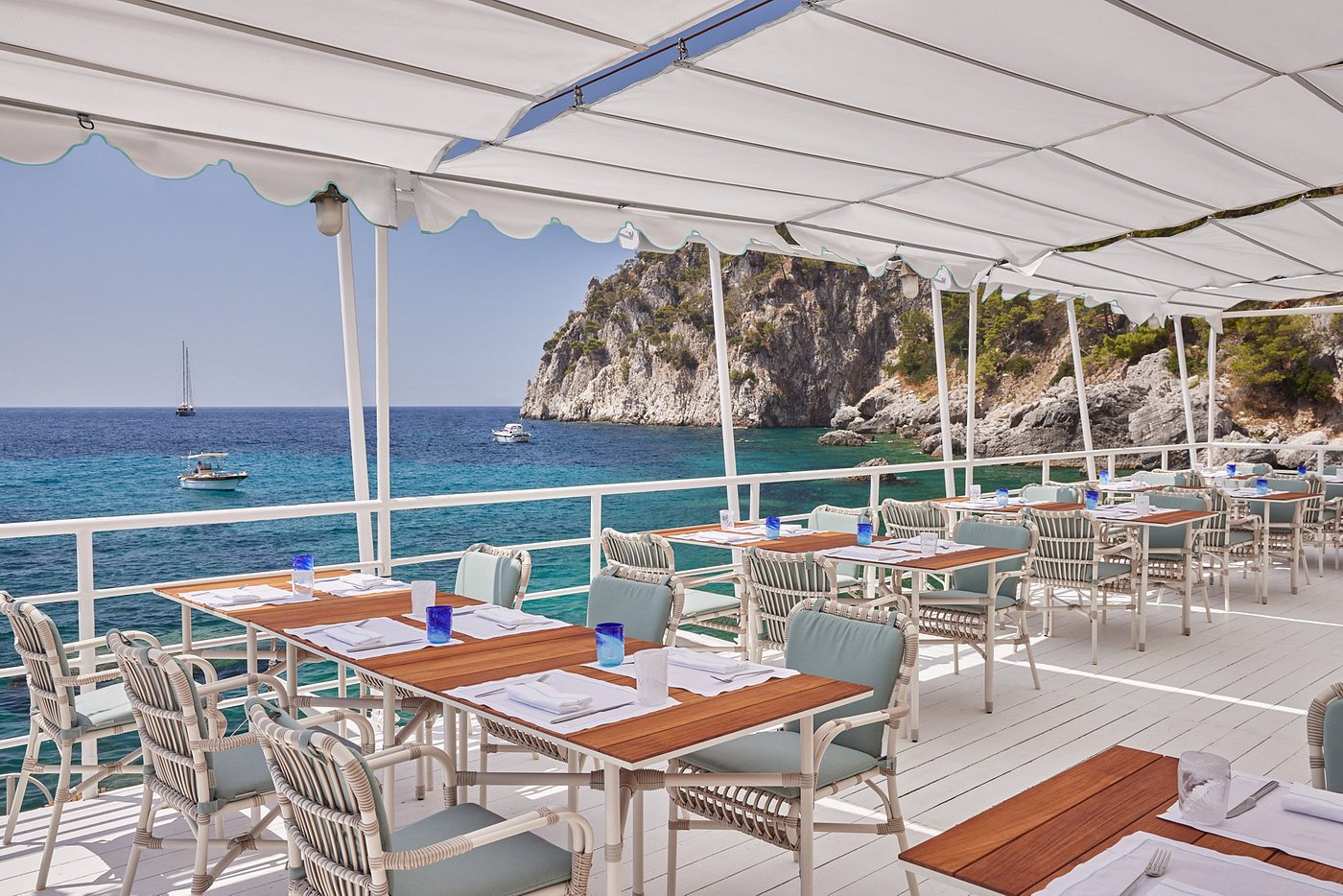
After a day spent by the sea, the hotel welcomed guests back to the serene sanctuary of La Palma Spa. The wellness area had been meticulously designed to offer a tranquil retreat, featuring three treatment rooms, including a double suite, and a dedicated beauty cabin. A luxurious wet area awaited, complete with a salt room, sauna, Turkish bath, and sensory showers, providing a range of rejuvenating experiences. For those seeking to stay active, a fitness area was equipped with state-of-the-art Technogym machines.
The spa treatments were enhanced with the use of Tata Harper products, renowned for their natural and organic ingredients. In a notable first for the hotel, guests were delighted to discover that the esteemed Italian beauty brand, Santa Maria Novella, founded in 1221, provided the luxurious bathroom amenities, adding an exquisite touch of timeless elegance. Furthermore, Hotel La Palma had partnered with the esteemed editor and tastemaker, GianLuca Longo, to curate an exclusive capsule collection. This exceptional collection showcased an array of bespoke products from renowned Italian brands, known for their dedication to craftsmanship and exceptional quality. The curated selection included designs by La Double J, Marinella, Farella, Aquazzurra, Panizza 1879, Marella, Allegra Hicks, Chiara Grifantini, Emilia Brano, La Gae L, and more.
Originally opened in 1822 under the name Locanda Pagano, Hotel La Palma held the esteemed title of being the oldest hotel on Capri. Notary Giuseppe Pagano, the visionary founder, had welcomed travelers into his villa, fostering a haven of intellectual discourse and artistic expression. The hotel became a cherished meeting place for artists, poets, writers, architects, painters, and musicians, who gratefully adorned the walls with their works, penned heartfelt poems, and filled the air with melodies. This unique establishment became known as the “Artists’ Hotel,” drawing together a collective of creative souls from across the globe, captivated by the spirit and inviting ambiance of this eccentric haven. Today, guests of Hotel La Palma were once again enveloped in the warm embrace of authentic Italian hospitality, continuing the tradition that had charmed visitors for generations.
To reach Capri, there are two main options: by air or by sea. The nearest airport is Naples International Airport, situated approximately 10 km away from the city’s port. An alternative is the heliport in Anacapri, and other airports such as Ravello (20 minutes) and Rome (70 minutes) can also serve as gateways to the island. Additionally, Capri can be accessed by ferry or hydrofoil from various locations. The journey takes approximately 25 minutes from Sorrento or Positano, 50 minutes from Naples, and one hour from Amalfi.
Discover more from SNAP TASTE
Subscribe to get the latest posts sent to your email.



